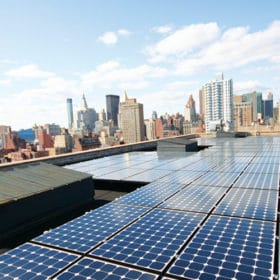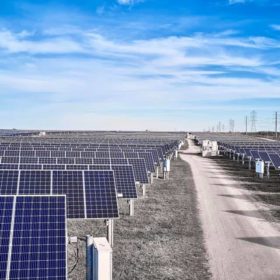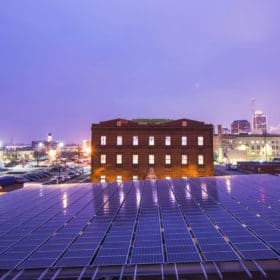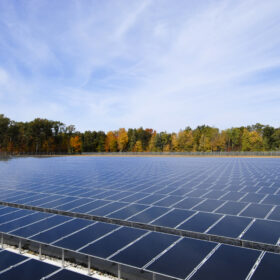New York seeks successor to solar power net metering
The state commission is seeking to wean solar customers off of pure net metering charges, while starting to provide motivation to consider demand charges and time-of-use. Current net metering was extended by a year, so expect these changes to be in effect starting in 2021.
New Mexico senator seeks solar sales tax to fund early childhood program
Senator Michael Padilla (D) of New Mexico has submitted the Renewable Energy Production Tax for consideration by the state. The 2.5% tax would fund early childhood education and care services, while exempting government and personal generation.
Six-year-old solar power plant partially repowered with new trackers and bifacial solar modules
OCI Solar Power has upgraded a portion of its Alamo 1 solar power plant in Texas from 295 watt solar modules on ERCAM single- and dual-axis trackers to bifacial modules on Array Technologies trackers.
Enphase prepping commercial inverters and a small-scale, off-grid solar-plus-storage box
Enphase also showed off a 640-watt, two-module commercial inverter and a solar-plus-storage package for two solar modules at its analyst day.
Three new types of solar power plants emerge in 2019
2019 was a year of change for the solar and energy storage industry, as we shifted from deploying pure wattage to making projects a lot smarter with oversized DC-AC ratios, up to 60% capacity factors, and solar plants that shine only at night.
FERC appointees want 4¢/kWh clean energy tax to fund fossil fuel welfare
FERC’s PJM Interconnection ruling: all utility scale nuclear and renewable energy bids must meet a new “minimum offer price rule” equivalent to any state-level incentives in order to “level the playing field” with fossil fuels.
Utility scale solar power as cheap as 70¢ per watt and still falling
Government researchers find that Florida has dethroned California as the largest market, trackers dominate, solar+storage compensation diversity, and a lot more in Berkeley Labs annual utility-scale solar power report.
Minnesota first state to integrate potential national distributed energy interconnection standard
The state has integrated the IEEE Standard 1547-2018 into its interconnection application requirements for distributed energy — seeking to make solar power more valuable to the grid and faster to connect.
Georgia Power has 5,000 residential solar net metering contracts and it’s first come, first served
In a rate case vote, regulators approved 32 MW of residential rooftop solar power to be installed, which could expand the utilities total base 500% from its current count of approximately 1,000 rooftops.
Dominion chooses 50 electric Thomas Built Buses powered by Proterra
The new electric school buses are part of a pilot program with a goal to integrate 13,000 Virginia buses into the state’s power grid as an energy storage resource.













